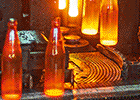In 1969, Bernard Savaëte wanted to work for a large corporation with a good reputation. With a background in chemical engineering, he ended up in the glass industry, where he’s spent the past 50 years in various roles with numerous companies.
Savaëte began his career with Boussois-Souchon-Neuvesel (BSN), a French flat glass, container glass and fiberglass company. According to Savaëte, the energy crisis of the 1970s forced BSN to sell its flat glass operations. In 1982, he ended up at PPG after BSN was sold to the company. “Becoming PPG in 1982 was, for me, a new reason to remain in the glass industry, PPG being at that time the main float glass producer in the world. Entering inside PPG group was a perspective of new opportunities,” he says.
His final position with the company was as directory of quality for PPG Glass Europe. In 2004, Savaëte created BJS.Différences, a consulting company that creates market surveys focused on the global flat glass industry. He still manages that business today. “I enjoyed very much, and still enjoy after so many years, working for the glass industry, where I have built good relationships with many people and which helped me to better discover and understand the world,” says Savaëte.
Industry History
Much has changed over Savaëte’s 50 years in the industry, which he says he’s been lucky to be a part of and observe.
“In 1969, much of the flat glass was produced in the Western world and was still produced with the sheet glass process (Fourcault, Pittsburgh or Libbey Owens’ processes), produced on a twin grinding and polishing line, or was produced for special production with cast glass or after melting glass in a pot,” he says. “Flat glass was a native process. David J. Bricknell, in his book Float – Pilkington’s Glass Revolution, provided information about start dates of the first float lines. [He said] that at the end of 1969, about 20 float lines were in operation, all of them located in the U.S., Europe and Japan. During the 1900s, the common belief was that the float process would remain forever a Western process … Nobody at that time was expecting that China would become the main producer of float glass, producing more than 50% of the global production.
Nobody was expecting that Pilkington would be bought by what was perceived, at that time, to be a small company: Nippon Sheet Glass.”
Another major change Savaëte has experienced over his career is in the coated glass business. During the 1970s, glass manufacturers spent huge amounts of money in research and development for pyrolytic coatings, he says.
“While during the 1970s glass producers believed that pyrolytic coatings would dominate the coated market, today, without any doubt, vacuum deposition coatings are dominating the coated glass market,” he explains. “A producer of float glass is today able to properly serve the market without pyrolytic coatings; the producer could not serve its market without vacuum deposition coatings.”
50 Years’ Experience
Not only is Savaëte knowledgeable about the history of the industry, but he is also passionate about glass. He is involved with two French organizations focusing on glass history—including Association Française pour l’Archéologie du Verre, which focuses mainly on archaeology and glass from the Roman Empire to the end of the Middle Age. The other is Verre & Histoire, which focuses on modern history.
“Few materials are offering that opportunity of a long history, of being a crucial component for the building industry, automobile industry and, nowadays, for the solar industry, while also being a material widely utilized for decoration and art works,” he says.
Savaëte says that if he could change anything about the glass industry it would be to make it more transparent (no pun intended).
“Too often we keep the spirit of the old tradition of Venice and Murano. By the late 1200s, the production of high quality fine glass objects was Venice’s major industry. The Glassmakers Guild laid out rules and regulations for the craftsmen and the purpose of the guild was to safeguard the secrets of the trade and ensure the profitability of the industry. I would recommend to communicate less legends and more facts,” he says.
For newcomers to the industry, Savaëte recommends they remain learners throughout their lives by attending meetings and exchanging knowledge with other professionals.
“Unfortunately, there are very few books or papers (except for basic knowledge),” he says. “The best way to deeply learn current technology is to read patent applications from suppliers, customers and mainly competition.”
One of Savaëte’s major accomplishments includes initiating new ways to communicate and share knowledge about the glass industry. He has been a speaker at the Glass Performance Days conference for several years.

























